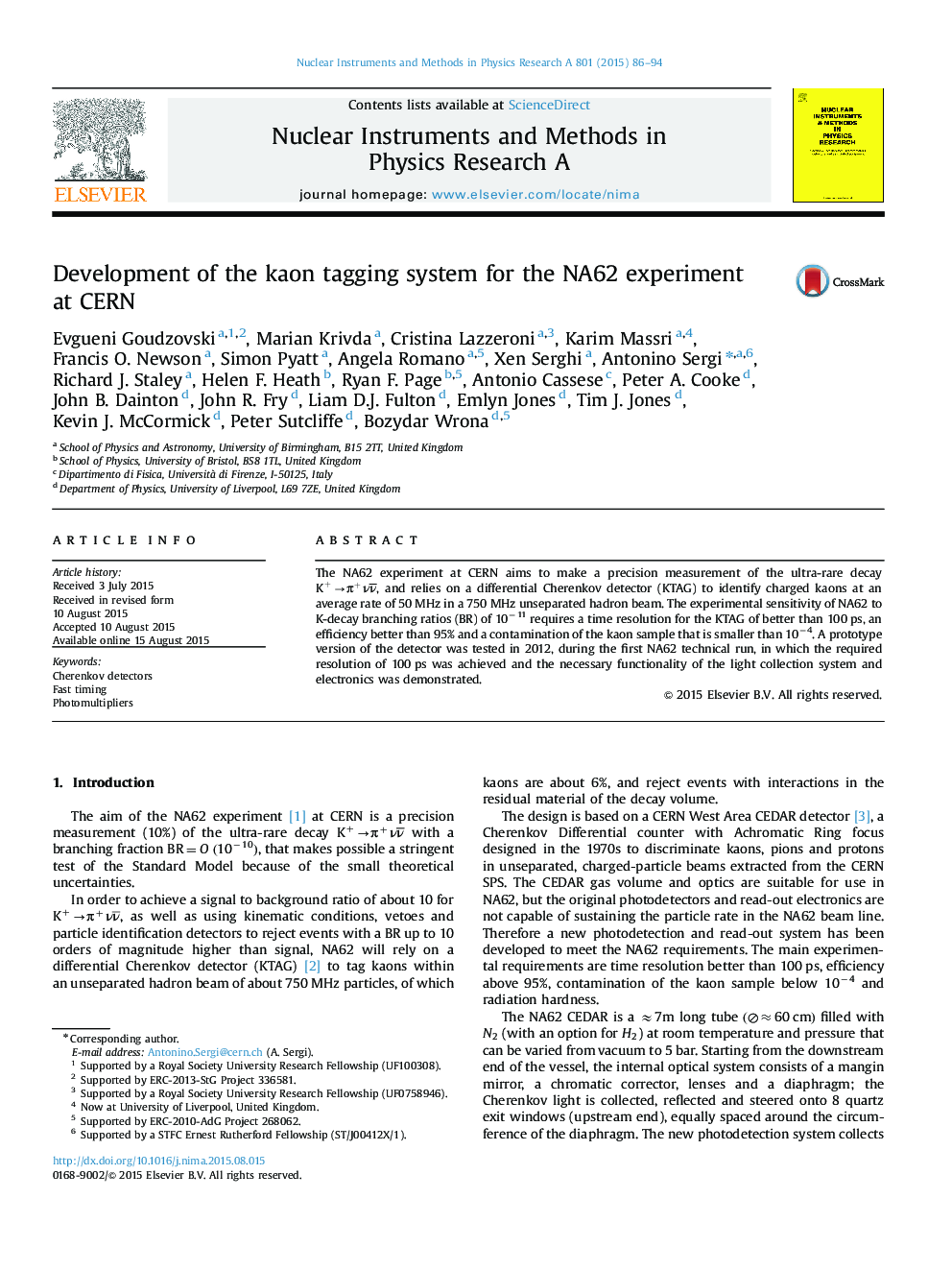| Article ID | Journal | Published Year | Pages | File Type |
|---|---|---|---|---|
| 8171837 | Nuclear Instruments and Methods in Physics Research Section A: Accelerators, Spectrometers, Detectors and Associated Equipment | 2015 | 9 Pages |
Abstract
The NA62 experiment at CERN aims to make a precision measurement of the ultra-rare decay K+âÏ+νν¯, and relies on a differential Cherenkov detector (KTAG) to identify charged kaons at an average rate of 50 MHz in a 750 MHz unseparated hadron beam. The experimental sensitivity of NA62 to K-decay branching ratios (BR) of 10â11 requires a time resolution for the KTAG of better than 100 ps, an efficiency better than 95% and a contamination of the kaon sample that is smaller than 10â4. A prototype version of the detector was tested in 2012, during the first NA62 technical run, in which the required resolution of 100 ps was achieved and the necessary functionality of the light collection system and electronics was demonstrated.
Related Topics
Physical Sciences and Engineering
Physics and Astronomy
Instrumentation
Authors
Evgueni Goudzovski, Marian Krivda, Cristina Lazzeroni, Karim Massri, Francis O. Newson, Simon Pyatt, Angela Romano, Xen Serghi, Antonino Sergi, Richard J. Staley, Helen F. Heath, Ryan F. Page, Antonio Cassese, Peter A. Cooke, John B. Dainton,
